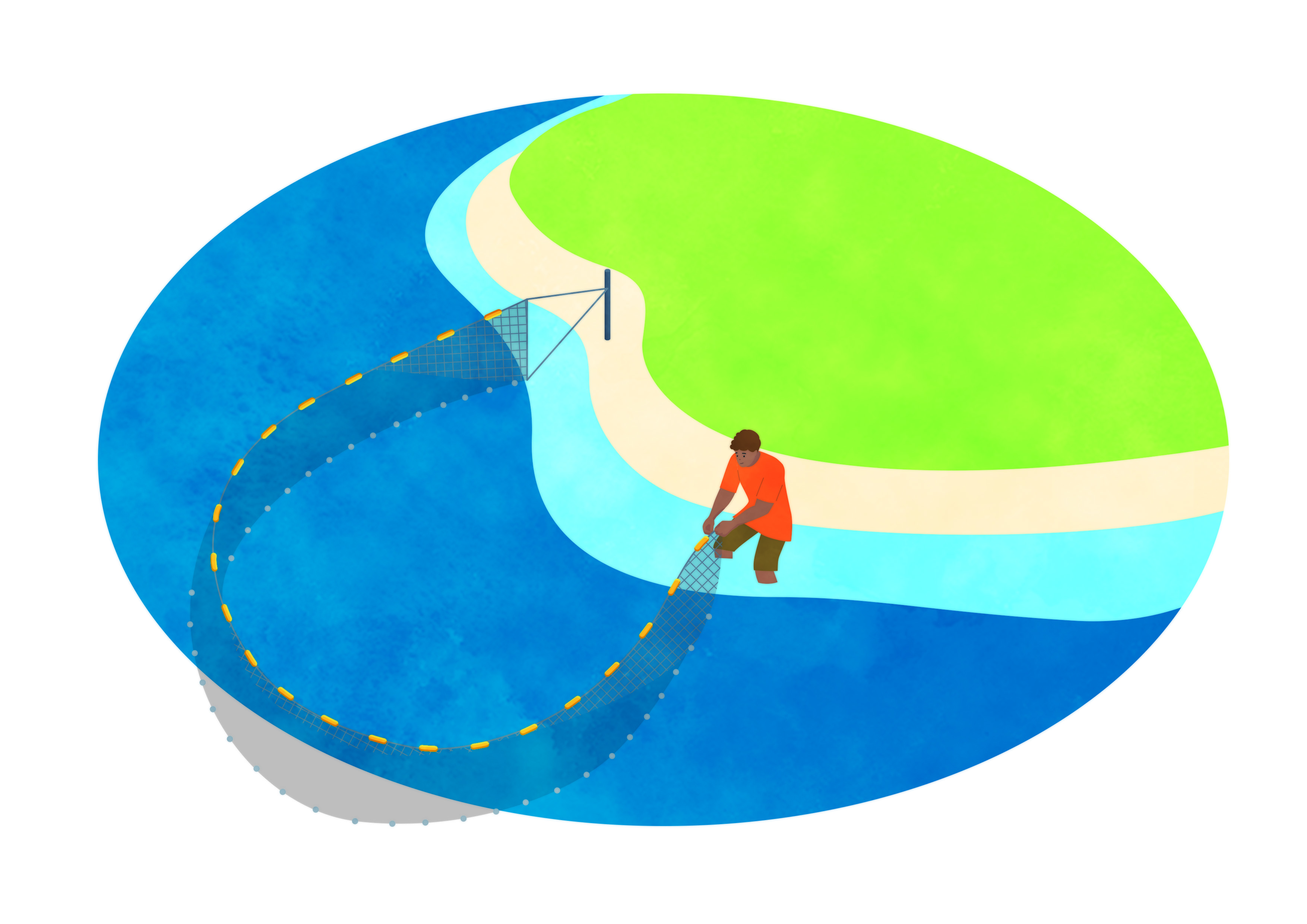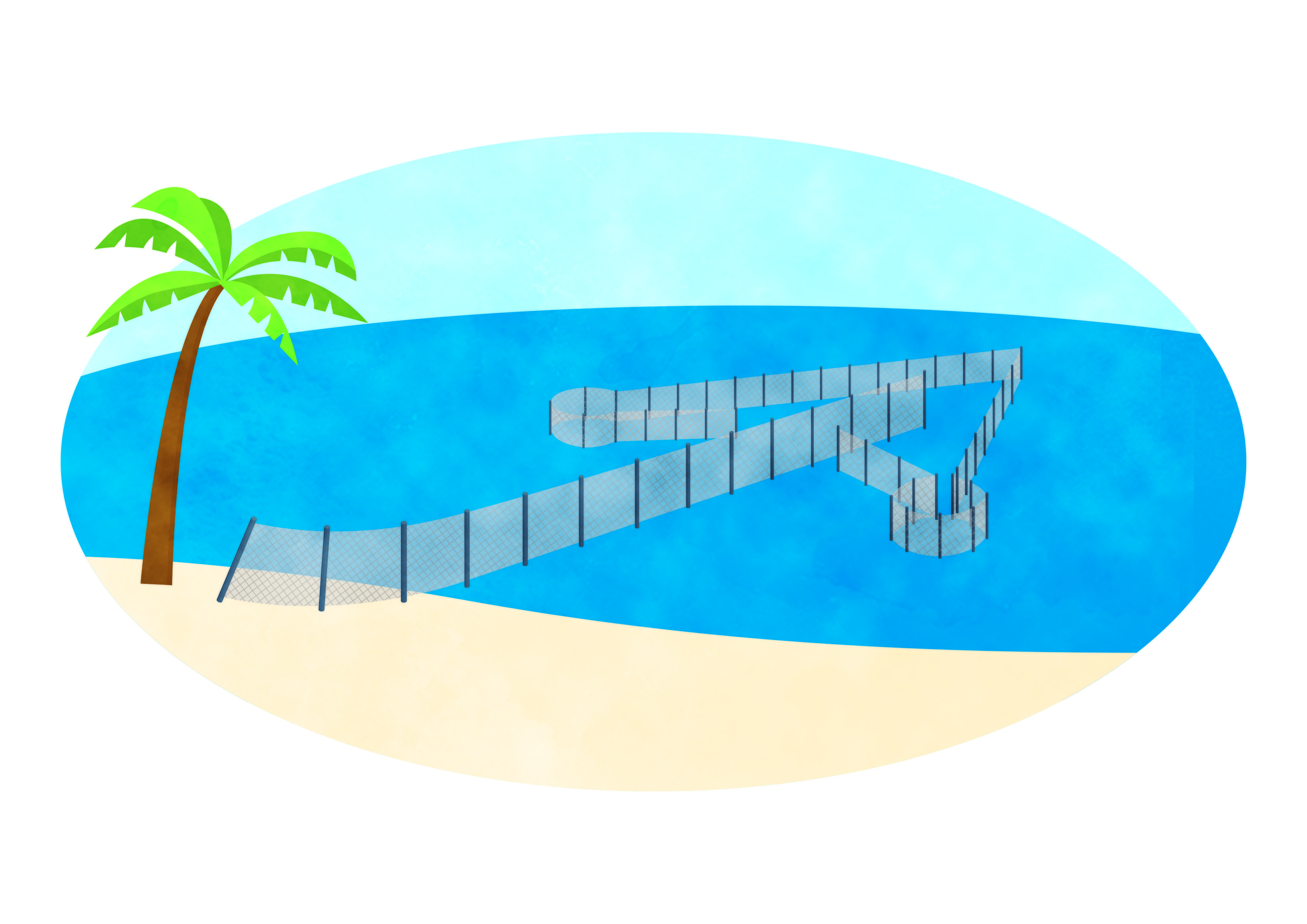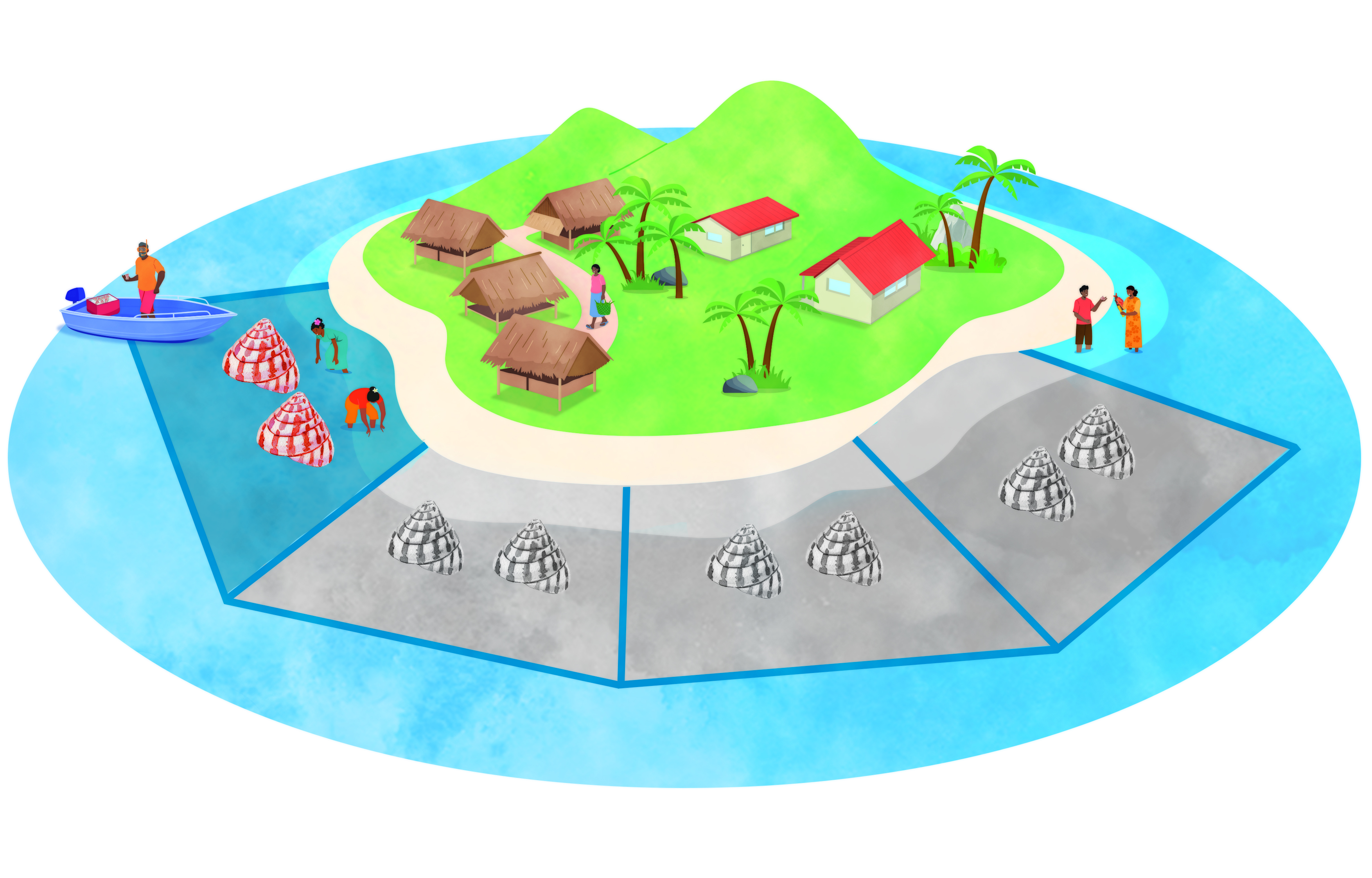What are limits on fishing gear and methods?
Limits on fishing gear and methods involves restricting fishing and harvesting to specific methods, including banning those that are destructive.
What is the purpose of limits on fishing gear and methods?
Many types of fishing and harvesting results in large numbers of specific marine resources being caught or harvested. The increasing use of such fishing and harvesting methods will decrease the number of marine resources available for food for communities and left to reproduce to sustain stock. Previously, when human populations were smaller, the use of overly effective fishing gear may have had little effect, but with increasing populations, limits on the way marine resources are caught or harvested are now increasingly necessary.
Destructive fishing methods, such as the use of explosives and damaging corals with derris root or crow bars can make reefs unproductive for many years. It is always important that enough marine resources remain to reproduce and replace the numbers caught and harvested each year.
When and where should we have limits on fishing gear and methods?
Community-imposed restrictions can involve banning commercial fishing in coastal habitats and controlling the use of highly efficient fishing gear by communities. The use of underwater breathing devices (e.g. SCUBA or hookah) has been banned in many countries.
Other commonly used gear includes gill nets, beach seine nets, cast nets, fish traps, fish weirs, fish baskets and gleaning. Problems occurs when these gears catch many fish of all sizes and sometimes entire schools of fish.
- A gill net is a panel of netting held vertically in the water by a series of floats attached to its upper edge and weights attached to its lower edge, as shown in the figure below. The strands of the gill net lock behind the gills of fish trying to pass through them. These nets often have a minimum mesh size mandated by fisheries authorities and are usually anchored in shallow water.

- A beach seine net is a panel of mesh netting, sometimes with a bag or section of loose netting in the middle of the net. The top of the net has floats and the bottom has a series of weights. The head and ground line ropes extend past the mesh to either a wooden pole or triangular bridles used to tow the seine net to the beach. Nets of up to 50 metres in length, deployed from a small boat or by wading, are used to surround schools of fish.

a beach seine net
- Fish traps and weirs use the ebbing tide to strand fish in areas hollowed out on reefs and sandbanks and are then contained by V-shaped or semi-circular walls of stone or coral. Fish traps and fish weirs are usually built at right-angles from shorelines and reefs to guide migrating coastal fish such as mullet into a large retaining area. Their ease of construction and the demand for their use by growing populations has resulted in some coastal areas having many fish traps or fish weirs separated by short distances.

a fish weir
- The harvesting of marine resources by gleaning is a common and often social activity that is an important source of food, particularly when the sea is too rough to catch or harvest marine resources in deeper waters. Gleaning is often practised by women fishers who need to remain close to home and who collect algae, sea urchin, sea cucumber and octopus from nearby reef flats.
Destructive fishing methods include the use of explosives and poisons to disable and capture fish. These include the use of derris roots and commercially available poisons such as bleach and cyanide as well as explosives. Poisonous plant materials are traditionally used to catch fish in many Pacific Islands. Derris root is derived from the roots of the climbing vine, Derris elliptica, and the nut of the coastal tree, Barringtonia asiatica. More seriously, commercial poisons are poured into pools, isolated at low tide, to capture marine resources that become trapped when the tide recedes.
How can we implement limits on fishing gear and methods?
Gill nets with regulated minimum mesh sizes, may allow small fish to escape. However, if the nets are not held taut, the netting sags and becomes tangled and then catches many small fish. This practice is hard to police and is best addressed by appealing to communities to respect minimum mesh sizes, keep nets stretched taut and return unwanted fish to the sea.
Beach seine nets, particularly those with small mesh sizes, catch everything in their path. Community restrictions can include limiting the number of nets allowed and banning their use in particular areas or seasons.
Fish traps and fish weirs are very effective in catching fish migrating along shorelines. Some communities have limited the number of fish traps and fish weirs used in their fishing areas.
Gleaning from the same area each day results in damage to reefs and corals. The combined impact of many people gleaning can be substantial. Some aspects of gleaning, such as the breaking of corals, should be banned.
Banning the use of destructive fishing methods requires local community-based action as these methods represent a serious threat to marine ecosystems and the long-term availability of seafood in communities.
Education and publicity campaigns are required to educate communities on the impacts of destructive fishing and harvesting methods and may be the best way of reducing the use of these destructive ways of fishing.
What are the benefits, problems and limitations of limits on fishing gear and methods?
A benefit to communities controlling the use of overly efficient fishing gears is that they better allow marine resources to be shared by all community members. More importantly, these restrictions may allow enough marine resources to remain in the water to reproduce and replace the numbers caught each year. Problems relate to the difficulty in controlling the use of these fishing gears.
Although the use of chemicals and explosives may be illegal under national laws, the practice may be tolerated in isolated communities in which the illegally caught fish are shared.
How do we know if limits on fishing gear and methods are working?
Local people, nominated by community leaders, monitoring the use of fishing gears, see an increase of action taken against offenders. Offenders caught using destructive fishing involving explosives and poisons are disciplined in line with local norms or penalised under relevant government regulations.
What other management actions can complement limits on fishing gear and methods?
Rotational harvesting (temporary closure) is an example where a large gleaning area can be divided into smaller sub-areas that are alternately opened or closed.

rotational harvesting

